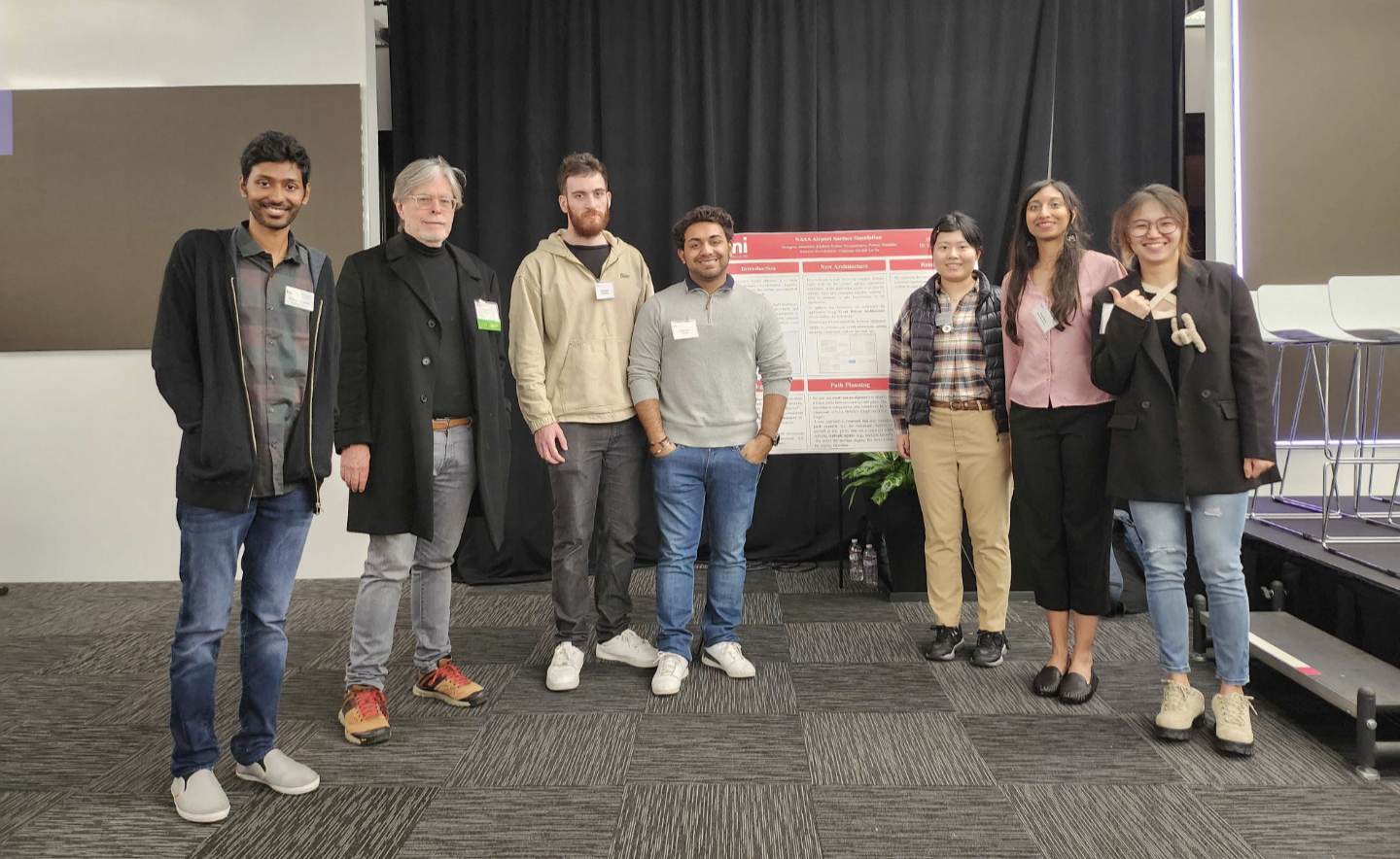Optimizing airport surface operations
Morgan Kistler
Apr 20, 2023

Team members (pictured left to right) included Pranay Maddula, Robert Morris, Georgios Ioannides, Rishabh Banga, Tingxuan (Tess) Gu, Hamsini Ravishankar, and Lu Yu
Travelers around the world face delayed flights and even near crashes as planes traverse taxiways. Likewise, air traffic controllers are tasked with quite the challenge when navigating multiple aircraft across busy airports.
In an effort to improve the safety and efficiency of air transportation, Georgios Ioannides (MSIT-IS ’22) and five fellow peers—all Information Networking Institute students—partnered with NASA Ames Research Center to improve simulation tools for use in U.S. civil airports. These tools are intended to simulate flight itineraries, controller commands, aircraft movements, and uncertainties at the San Francisco International Airport with the aim of improving air traffic control and scheduling.
To further develop the simulator, some team members focused on building the data infrastructure to ensure that the different components of the software package can be utilized and maintained independently while also running faster and easier on a variety of machines.
The team also approached the problem by breaking it down into two components: the scheduler and the air traffic controller. The scheduler was tasked with determining the optimal paths for multiple aircraft to traverse from point to point. Ioannides proposed, developed, and evaluated a new approach for the scheduler which utilized multiple agents and considered the maximum number of aircraft that can be accommodated at any given time on a taxiway, leading to more efficient scheduling of aircraft movements.
The project has real-world implications and a potential impact on the U.S. economy.
Georgios Ioannides (MSIT-IS ’22)
For the air traffic controller component, Ioannides proposed, developed, and evaluated a reinforcement learning approach that allowed artificial intelligence to assess the current situation and make more informed decisions. Using techniques from the field of signal processing, a virtual version of the airport runway and airplanes was simulated, and the program is now being taught to make decisions using a method called Q-learning.
The controller was jointly implemented with the scheduler, and air traffic controllers at the San Francisco International Airport can now utilize the tool to make better-informed decisions when giving feedback to pilots.
For Ioannides, this implementation was truly what gave the project a purpose.
“The project has real-world implications and a potential impact on the U.S. economy,” Ioannides explains. “By making airports more efficient, the project could improve the air transportation experience for travelers around the world while also potentially reducing the number of delayed flights and near-crashes that occur due to inefficient scheduling and air traffic control.”
Ultimately, the team’s differing skill sets—ranging from computer systems design to user experience and machine learning research—made progress toward this implementation possible.
“The diverse set of backgrounds allowed us to progress all aspects of the tool that we were working on and not just one of its components,” explained Ioannides. “In the end, we were able to integrate them all together and make an enhanced simulator that significantly improves upon the efficiency and safety of civil airports’ traffic control.”